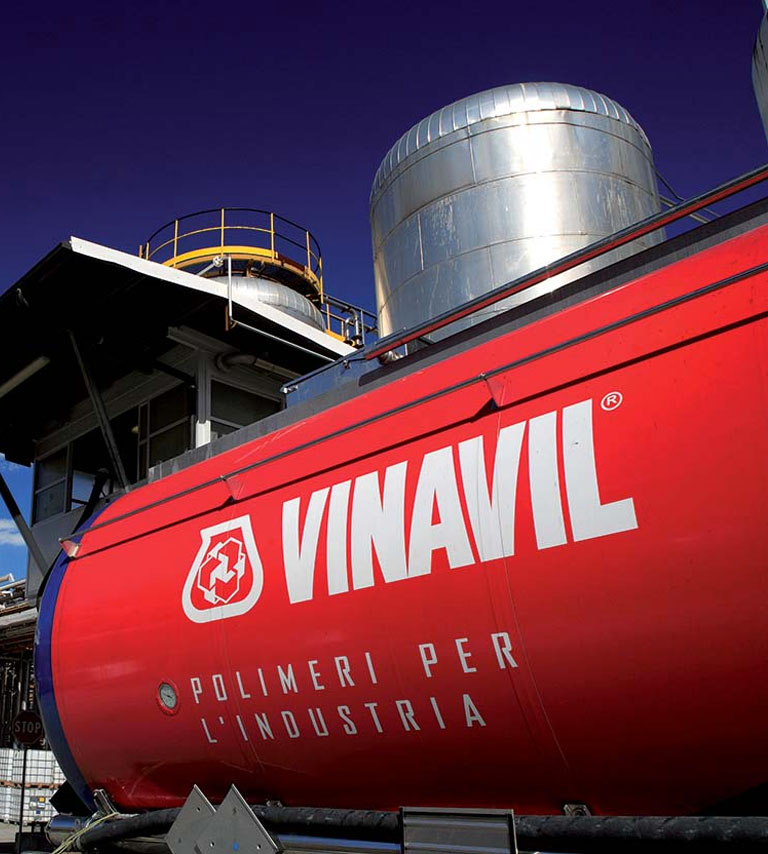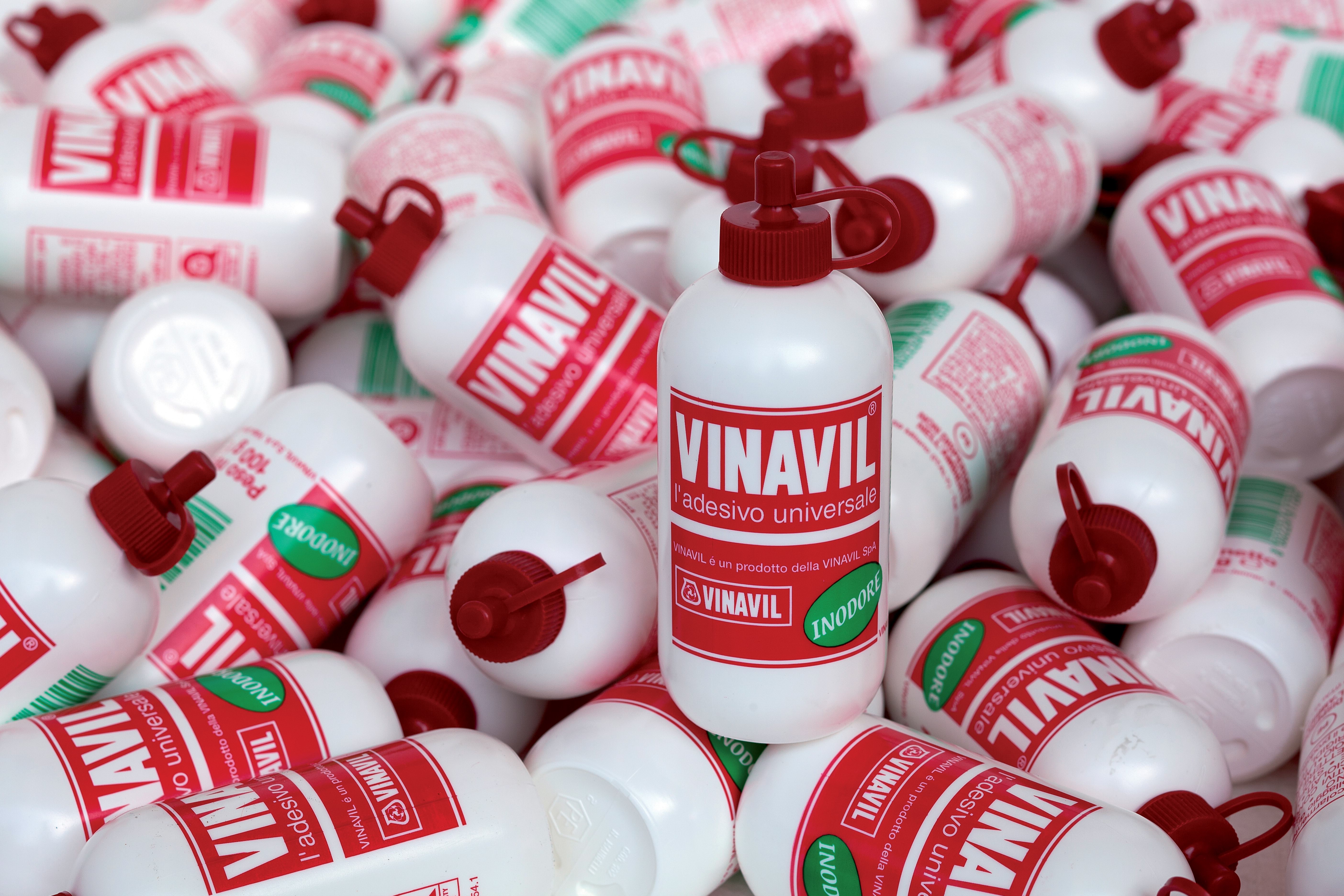

Vinavil: an historic trademark in Italian chemicals
Vinavil keeps on growing and is celebrating 25 years in the Mapei Group.
Vinavil keeps on growing and is celebrating 25 years in the Mapei Group.
The story of Vinavil, a subsidiary of the Mapei Group that manufactures vinyl acetate polymers, is closely entwined with the history of Italian chemicals, an industry that underwent significant and not always painless change during the course of last century. The company is now celebrating 25 years in the Group: this is a chance to take stock and plan new strategies for the future on a rapidly evolving market.
With revenue of 181 million Euros in 2018 (47% of which in Italy and 53% abroad) and 500 staff worldwide, Vinavil SpA is a global company: its manufacturing-business structure and technical assistance service are expanding and the company is focusing on long-term partnerships with other operators in the chemicals industry, supplying products for miscellaneous sectors ranging from the textiles to the chewing-gum industry. But Vinavil does not just manufacture for industry: the brand has actually been famous for decades thanks to Vinavil universal adhesive, the famous “white glue” in its distinctive red and white packaging.
There is also considerable focus on environmental sustainability: the manufacturing plants in Ravenna (Central Italy) and Villadossola (Northern Italy) manufacture solvent-free solid or water-based dispersions guaranteeing extremely low emissions of volatile organic compounds. In every industry in which it operates, Vinavil manufactures products complying with the regulations in force in all those countries to which they are supplied. The Research& Development sector also plays a key role in formulating innovative products.
Vinavil’s story continues in a mix of tradition and innovation.
NOT ONLY “WHITE GLUE”
Vinavil’s manufacturing breaks down into the following production realms:
- Vinylic and acrylic binding agents for water-based paints
- Vinylic and acrylic dispersions for adhesives and the textiles industry
- Re-dispersible polymer powders
- Solid polymers for the chewing-gum industry
- Polymers in pearls for special uses
- Vinyl adhesives for the “do-it-yourself” market
- Vinylic and acrylic polymers tailor-made for miscellaneous uses (from cementitious additives to suspending agents for polymerisation, etc.).
STEPPINGS STONES IN A HUNDRED-YEAR BUSINESS VENTURE
1922 A production facility is opened by SET (Società Elettrochimica del Toce) and SIPS (Società Italiana di Prodotti Sintetici) in Villadossola (Italy) to produce calcium carbide. Over the next few years, the facility starts producing rayon acetate.
1936 Production of vinyl acetate commences on a semi-industrial scale which is transformed into polymers and polyvinyl alcohol for applications in the adhesives sector.
1942 The so-called “white glue” is created which ten years later becomes known as Vinavil “universal adhesive”.
1946 The French company Rhòne Poulenc, through the company Rhodiatoce, launches a joint-venture with Montecatini. Over the next few years, the company brings in its valuable know-how originating from large German industrial groups.
1952 Reactors to produce polyvinyl acetate in emulsion are installed and at the same time the name Vinavil is born (an abbreviation of Vinyl Acetate at Villadossola). This white latex invades the Italian market and soon becomes synonymous with glue.
1966 Montecatini merges with Edison, to form Montecatini Edison S.p.A., which in 1974 becomes Montedison. This new colossal company carried with it the seeds of the successive industrial crisis. In 1972 Rhòne Poulenc leaves the joint-venture.
1979 The cost of running the vinyl acetate plant is no longer sustainable and it closes down, followed shortly after by the closure of the calcium carbide plant in 1983.
1990 All Montedison’s chemical operations are passed over to EniChem. The plant in Villadossola comes under the umbrella of the operations company EniChem Synthesis, along with the facility in Ravenna (Central Italy) which produces similar products.
1991 EniChem presents a Business Plan which foresees the closure of the facility in Villadossola. After strong pressure from politicians and trade unions, it is decided to sell the company.
1994 Mapei buys the vinyl acetate production activities from EniChem Synthesis and the purchase includes the Villadossola and Ravenna facilities. The new company is renamed Vinavil S.p.A. Following the acquisition, a restructuring and redevelopment process is launched.
1997 Internationalisation of the company commences with the foundation of Vinavil Corp. (USA) and Vinavil Inc. (Canada) in North America. Since 2001 there has been a joint-venture in Egypt (Vinavil Egypt).
2000 Production of redispersible powders used in cementitious products by Mapei commences and, the following year, a line of acrylic emulsions is launched.
2007 A new line of copolymer solutions from a 30 m3 reactor is launched. In the same year, the company is awarded EN ISO 14001 certification.
Some steppings stones of Vinavil
1922A production facility is opened |
1942The so-called “white glue” is created |
1952The name Vinavil is born (an abbreviation of Vinyl Acetate at Villadossola) |
|
|
||||
1994Vinavil enters the Mapei Group |
1997Internationalisation of the company commences |
2019Vinavil celebrates 25 years in the Mapei Group |
||||||





.jpg?sfvrsn=e6c32674_4)




.jpg?sfvrsn=a0c32674_6)

.jpg?sfvrsn=8dc32674_4)
.jpg?sfvrsn=e4c32674_4)

.jpg?sfvrsn=a1c32674_4)
.jpg?sfvrsn=e0c32674_4)
.jpg?sfvrsn=8ec32674_4)

.jpg?sfvrsn=a3c32674_4)
